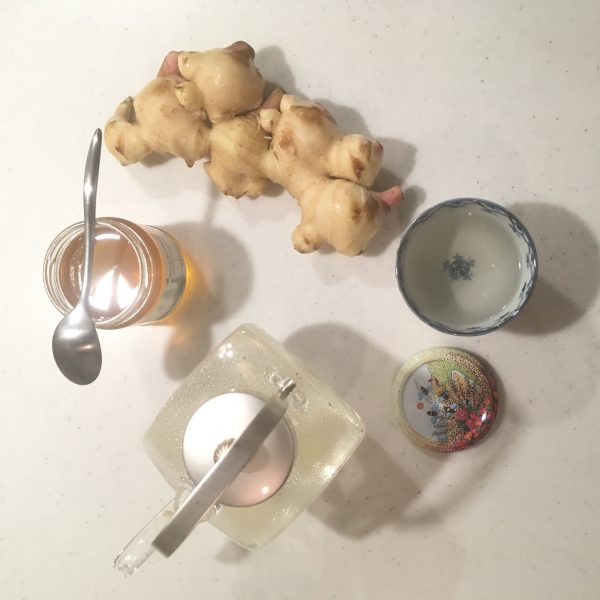For most people outside of Asia, ginger is this wrinkled beige root that can be found all the time, but in Asia, even if you can find more or less fresh ginger all year round in supermarket, there is still a season for harvesting fresh new ginger, and it’s now!
Ginger is often use as condiment in cooking, with tofu, pork… or even more often pickled or candied in a savory preparation. In Japan contrarily to other Asian countries it is rarely used in sweets: not savory candied ginger is not so easy to find. I made some, quite a long time ago and plan to make some again this weekend. There is one thing I particularly love ginger for it’s for preparing drinks. Remember the apple ginger cider? And the honey ginger? Well these are some classics and honey ginger is so easy to make. Well this time I mage a variation of it. It’s ginger milk and honey. It’s of course richer then the herb tea but it has something less stringent and more comforting. For making it, it’s simple. You need a piece of juicy fresh ginger, milk and honey. Wash the ginger and slice it thinly. New ginger skin is so thin you can keep it. In a pan pour the milk and add the ginger. Let sit for one hour. Then boil the milk, serve and add honey. You can serve without filtering and enjoy the ginger while drinking.
One other way to do it is to extract the juice of the ginger by grinding it, add to the milk and boil immediately. This method is faster but I find that extracting the juice of ginger is quite messy… or maybe it’s just me!
And did you know that ginger is good for sore throat and when you are tired too?










